On the occasion of the 85th anniversary of the Southern Uprising Day (November 23, 1940 - November 23, 2025), Can Tho Newspaper, Radio and Television would like to introduce a 3-part series of articles "85 years, forever the flame of the Southern Uprising", published on the Creation - Research page, published on Sundays November 9, November 16 and November 23.
Lesson 1: Phu Huu Flag
From Ninh Kieu wharf, go down the Hau River towards the sea for about 20 kilometers, turn into Mai Dam River, go another 2 kilometers to reach the "Nam Ky Uprising 1940 in Phu Huu" Monument. The Nam Ky Uprising Monument next to the Phu Huu communal house roof reflects on the gently flowing Mai Dam River. The heroic history of 85 years ago still echoes somewhere...
Stand up and break the "double yoke" situation
In September 1939, World War II broke out, France surrendered to Nazi Germany, so the Japanese fascists took this opportunity to send troops into Indochina. Our people were caught in a "double yoke" situation. In November 1940, the Thai military, under orders from the Japanese fascists, attacked Cambodia. The French colonialists forced Southern soldiers to go to battle to serve as cannon fodder for them. Hating the French colonialists and encouraged by the gunshots of the Bac Son uprising, the Southern people were seething with anger.
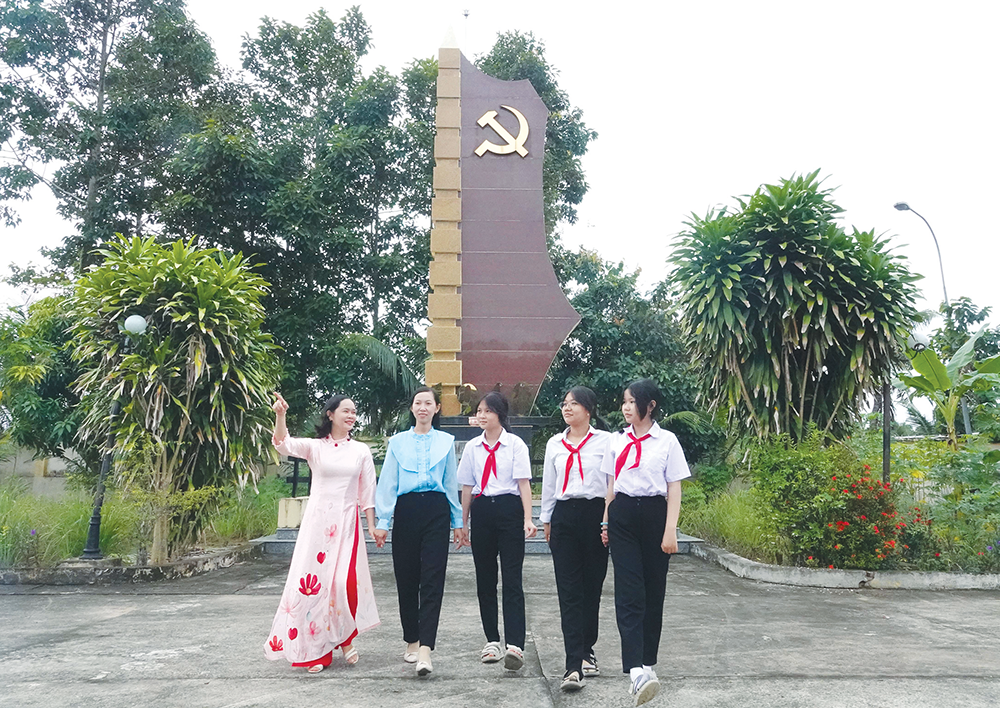
National relic site “1940 Southern Uprising in Phu Huu”. Photo: DUY KHOI
By mid-November 1940, in the face of the fighting spirit of the masses, especially the anti-war spirit of Vietnamese soldiers in the French army, the Southern Regional Party Committee decided to launch an uprising in the entire Southern region to overthrow the colonial government and take power into the hands of the people. The time for mass action in the Southern provinces was at 0:00 on the morning of November 23, 1940, the signal was for the lights of Saigon to go out or for gunshots to be heard.
The uprisings broke out simultaneously in most of the provinces of the South with a fierce spirit, from Gia Dinh, Cho Lon, My Tho, to Can Tho, Vinh Long ... The armed forces and the masses rose up to attack the enemy in the communes, raided many outposts, attacked some district capitals, destroyed many bridges and roads... In some communes and districts, the enemy government was confused and disintegrated, and a revolutionary government was established. For the first time, the red flag with the yellow star appeared in places where revolutionary governments had been established and in many demonstrations. Counter-revolutionaries were tried. The fields and rice of reactionary landlords were distributed to poor farmers.
However, the uprising was brutally terrorized by the French colonialists and drowned in blood. In December 1940, the Southern Regional Party Committee held a meeting in Ba Queo (Gia Dinh) and decided to withdraw the uprising to avoid losses, sending the remaining forces to build the U Minh and Dong Thap Muoi bases. Although it took place in a short time, the Southern uprising was the largest and most intense armed uprising since the French colonialists invaded the six provinces of Southern Vietnam in 1867 until 1940.
The Southern Uprising left an indelible mark on the Southern part of the Fatherland. The Southern Uprising shook the French colonial government and its puppets in the South, becoming the gunshot that signaled the inevitable victory of the nationwide general uprising.
Southern Uprising in Phu Huu
Carrying those historical pages, we went to Chau Thanh commune, Can Tho city, where the national relic "Nam Ky uprising 1940 in Phu Huu" is located. We met Mr. Nguyen Van Tong (Nam Tong), a local veteran, who introduced and welcomed visitors to this relic. Mr. Nam Tong is 70 years old this year, and was the Chairman of the Veterans Association of Mai Dam town (old). For nearly 20 years, Mr. Nam Tong has persistently told the history of his homeland to tourists and the younger generation. Although he was not a witness to the Nam Ky uprising, through the stories of his ancestors and recorded documents, Mr. Nam Tong wrote a concise and tragic explanation.
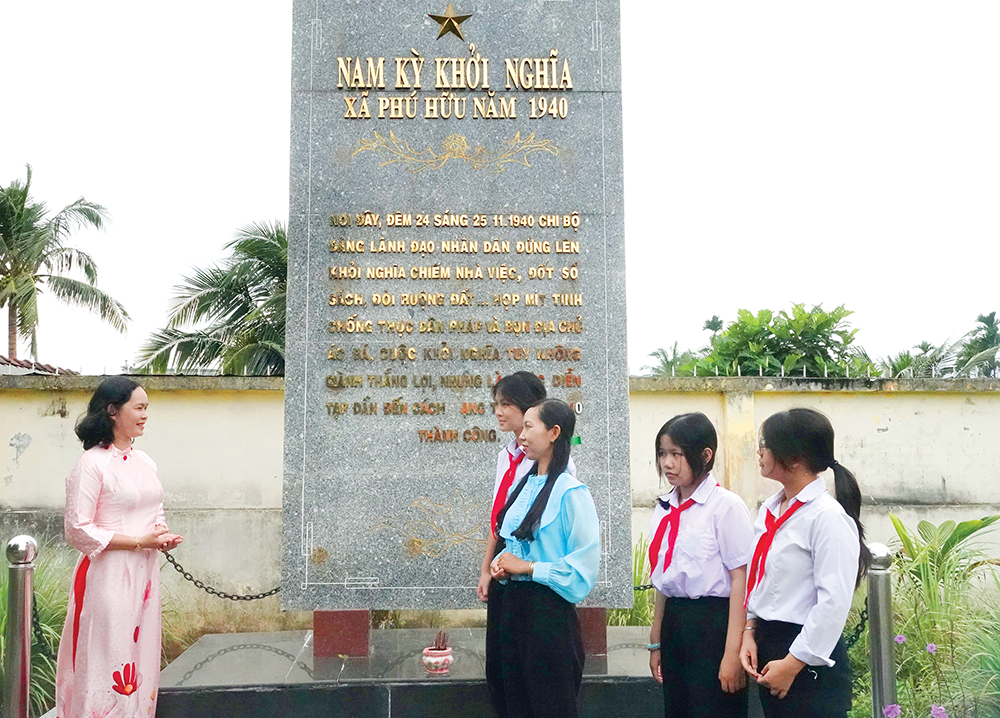
Teachers and students of Nam Ky Khoi Nghia Secondary School (Chau Thanh Commune) next to the stone stele recording the 1940 Nam Ky Uprising in Phu Huu. Photo: DUY KHOI
“This land is a heroic land. The Southern uprising here was earth-shattering. I tell the story to instill in tourists, especially the youth, pride in their homeland,” Mr. Nam Tong began his story with us. And in the memories of the 70-year-old man, the flame of the Southern uprising in Phu Huu village is still intact.
In the early 20th century, Phu Huu village belonged to Dinh An commune, Phung Hiep district, Can Tho province. In 1937, comrade Quan Trong Hoang, a leading cadre of Hau Giang Special Committee, came to Phu Huu to sow revolutionary seeds, admitting Mr. Nguyen Phuoc Ngoan (Ba Gan), Nguyen Van Phuc (Tran Duy Phuoc) and Ngo Van Diem into the Red Peasant Association. After a period of testing and improving their understanding of the Party, the three comrades were admitted to the Indochinese Communist Party at Rach Ba Hon (Xom Chai - Can Tho).
The comrades returned to Phu Huu and established a reserve party cell at comrade Ba Gan's house in Nga La, Phu Huu, with comrade Quan Trong Hoang as Secretary. On June 15, 1938, three reserve party members were officially transferred, comrade Quan Trong Hoang withdrew from the party cell to work above, and comrade Tran Duy Phuoc was elected Secretary. The Party cell in Phu Huu was established and led the peasant struggle movement very enthusiastically and built a very good revolutionary base.
Since receiving the “Uprising Outline” of the Southern Regional Party Committee deployed by the Can Tho Provincial Party Committee in April 1940, the Phu Huu Party Cell had been actively preparing for the uprising. The Party Cell organized many good mass meetings to launch the movement and chose a location in the deep forest to build a hut under the shade of the palm trees (called the “Cay Ke” hut) to serve as a place for training and studying for the youth and farmers with revolutionary passion in the village.
The uprising order of the Southern Regional Party Committee arrived in Can Tho at 12 noon on November 22, 1940, but it was not until late on November 23, 1940 that the Phung Hiep District Party Committee received the order and launched the uprising. On the morning of November 24, 1940, the Phu Huu Commune Party Cell mobilized about 70 patriotic people to gather at the house of Mrs. Lua (mother of comrade Ba Gan) in Nga La, combining forces from other communes such as Dong Son and Dong Phu to advance to Phung Hiep district. At 4 pm on the same day, the force arrived at Nga Bay - Phung Hiep.
With its historical and cultural values, the relic "Nam Ky Uprising 1940 in Phu Huu" was recognized as a national historical and cultural relic by the Ministry of Culture and Information under Decision No. 154-VH/QD, dated January 25, 1991.
Because our plan to occupy Phung Hiep district was exposed, we carried out plan 2: cut down trees, pull up steel wire poles to make obstacles and burn Phung Hiep bridge. While the work was in progress, the superiors ordered a retreat to attack Cai Cui post in Dong Phu village. When the soldiers of Cai Cui post heard that the Communists had rebelled, they fled. The plan to attack the post could not be carried out, and the insurgents immediately retreated to occupy the Phu Huu village office. The village councilors all fled, and the insurgents raised banners, flags, and slogans calling on the people to rise up and seize power, reclaim their land; and burned all the enemy's books and papers. Comrade Ba Gan planted the flag at the office during the Nam Ky uprising in 1940.
The enemy in Tra On was informed, the District Chief of Tra On sent troops to suppress the uprising. They arrested 37 people, including cadres, party members and revolutionary masses. Many people were later imprisoned in Can Tho Prison, before being exiled to Con Dao, including comrade Ba Gan and his brothers, Phung Hiep District Party Secretary Nguyen Van Mai...
***
Listening to the old stories of his hometown, Nguyen Khanh Ngoc, a 9th grade student at Nam Ky Khoi Nghia Secondary School, Chau Thanh Commune, emotionally shared: "I am proud of the traditions of my hometown and grateful to the previous generations. Although this is not the first time I have come to the relic site and heard the story, each time I am very moved." Mr. Nam Tong is the same, for him, each time he stands at the foot of the memorial stele telling about the Southern Uprising in Phu Huu, it is a new feeling, in his mind flashed the image of comrade Ba Gan planting the flag at the Phu Huu Office with the flag fluttering proudly.
DANG HUYNH
Please continue to part 2: The oath under the village communal house roof
Source: https://baocantho.com.vn/85-nam-sang-mai-ngon-lua-nam-ky-khoi-nghia-a193673.html
























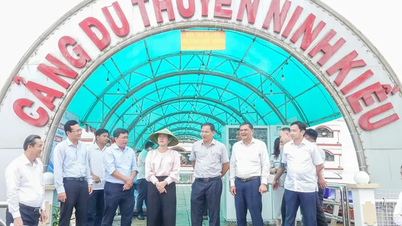

















































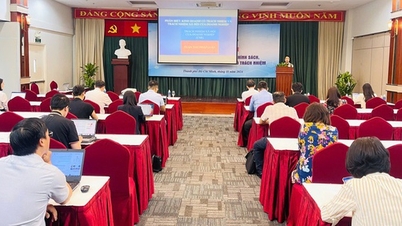






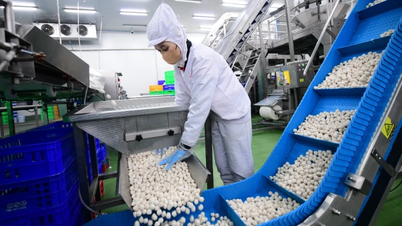





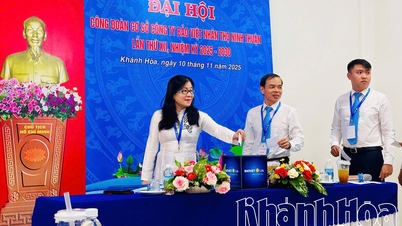

![Dong Nai OCOP transition: [Article 3] Linking tourism with OCOP product consumption](https://vphoto.vietnam.vn/thumb/402x226/vietnam/resource/IMAGE/2025/11/10/1762739199309_1324-2740-7_n-162543_981.jpeg)












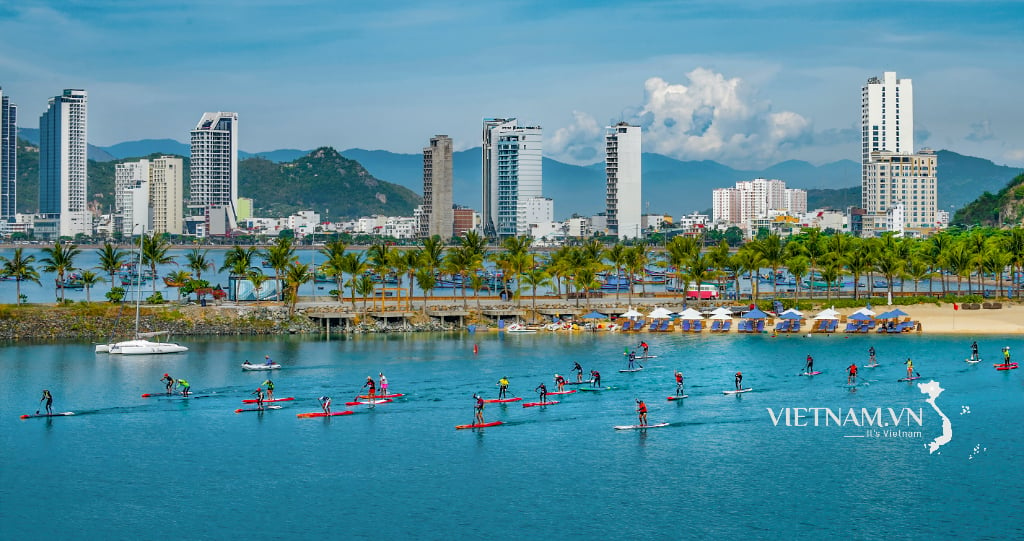
Comment (0)